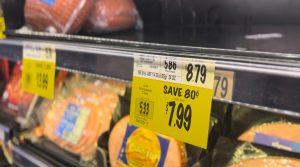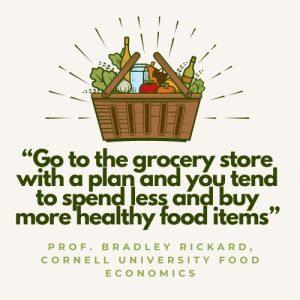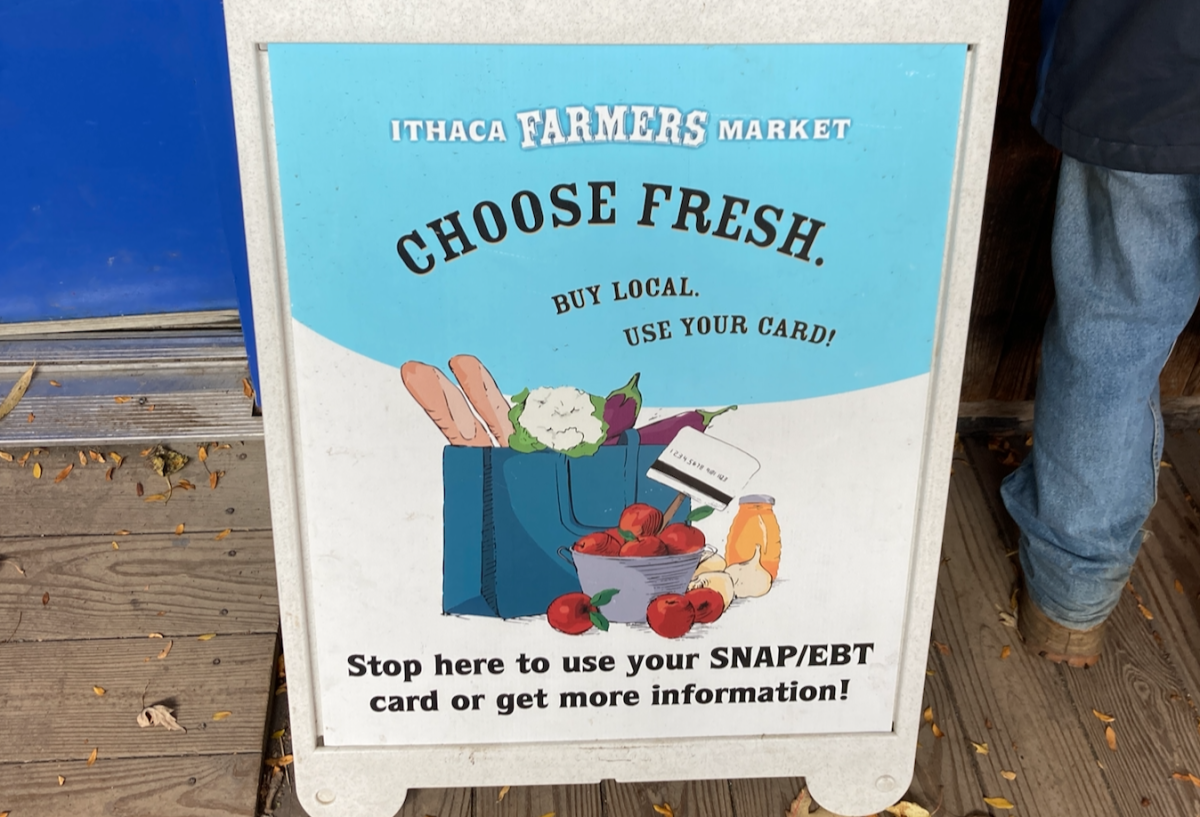
Consumers in Ithaca and across the country have been finding it hard to put food on the table with record high inflation.
“I’ve been more aware of what I’m buying, sometimes I have to put stuff back because it’s too much money, and I’m a broke college student, you know, and food is expensive,” said Abby Costa, a sophomore at Ithaca College.
Ithaca College student Mia Emmi said she found herself opting for smaller portions of certain food items, including a slice of cheesecake she purchased for her roommate’s birthday.
Paul Nicholson of Ithaca said the high prices have impacted his shopping habits. “Instead of stopping at one place, I’m going store to store to find the best deal,” he said. The increased cost of food has led him to scout out deals at various food retailers, Nicholson said- and if he spots an eye-catching deal, he is more inclined to stock up on products ahead of time.
“The other day mouthwash was on sale 20 or 30% off the regular price. I have about four giant bottles of mouthwash. Things like that, you just have to buy extra when it’s on sale,” said Nicholson.
The Price Squeeze

Between grocery bills and the cost of dining out, Americans are spending more of their disposable personal income on food than they have in 30 years. For example, in 1995 lean ground beef retailed at just over two dollars per pound, just as of last year it costed well over six dollars.
Data from the Department of Agriculture’s Food Price Outlook report shows in 2022 consumers spent more than 11% of their disposable personal income on groceries and restaurant purchases. The cost of dining out has continued to climb, with restaurant purchase rates increasing 5.1% from January 2023 to January 2024, according to the report.
While the USDA predicts inflation to slow throughout the remainder of 2024, food prices remain high and both grocery and restaurant prices are forecasted to increase largely due to labor costs.
Consumers can expect higher prices for restaurant bills throughout the remainder of 2024, the USDA predicts.
Food Predictions for 2024 According to the U.S. Department of Agriculture
·Grocery prices will increase 1.6%
·Restaurant prices will increase 5%
Key Factors Affecting Food Costs
Labor and transportation costs, the COVID-19 pandemic and the avian bird flu are all contributing to high grocery and restaurant bills, experts say.
“That’s really throughout the entire supply– or value– chain, from workers on farms…all the way to retail associates,” said Dan Hooker, a professor of supply chain strategy and food marketing in Cornell University’s Food Industry Management program.
Hooker explained how January’s increase in minimum wage from $15.00 to $16.00 in New York City and from $14.20 to $15.00 across New York — and 22 states — created competition among food companies, impacting food prices. Increased minimum wage rates play a role in the rising cost of dining out, as menu prices rise to pay staff.

“If a company like McDonalds raises their wages by a dollar or two per hour, the companies that make or produce food will have to do the same to compete for those workers,” said Hooker.
“With high prices I am more likely to go to Target or Walmart,” said Emmi, especially when she is shopping for fruit and produce.

“Apples are a much more labor-intensive food product, in order to grow the fruit, sort through the fruit, move it into the grocery stores, the cost of labor is a much bigger deal for fruit crops,” said Bradley Rickard, professor of Food and Agricultural Economics at Cornell University.
Different types of food and its production are subject to different labor costs, which can lead to changes in pricing, according to Rickard.
Inflation has also played a large role in the increased prices, according to Rickard. Egg prices soared in 2022 and December 2023 when retail costs increased 8.9 percent due to an outbreak of avian bird flu.
“Eggs alone had inflation rates of 30 to 40% over several months,” said Rickard. “It was just another shock to the system that also affected food prices,” Rickard said. Retail egg prices are predicted to decrease 2.8 % in 2024.
Effects of Covid-19
Rickard said the COVID-19 pandemic brought us to “a new world of food prices.” Throughout the pandemic, scarcity, high product demand and factory closures caused supply chain issues according to Hooker.
“There was an imbalance between supply and demand, and when there’s an imbalance of supply and demand, the prices go up,” said Hooker. “There was a shortage of truck drivers, there was a shortage in inbound freight and delays, getting containers in and out of our ports caused costs to go up.”
Spikes in food costs caused by the pandemic have subsided, but the Department of Agriculture still predicts grocery and restaurant prices will increase throughout the rest of 2024 due to labor costs.![]()
Grocery Shopping: Tips to Save
Costa said she visits certain grocery stores depending on the products she is looking to buy. “I’ll try and look for deals too, to try and save some money,” Costa said.
![]()
![]() Here are a few common practices to help consumers save money, according to Hooker:
Here are a few common practices to help consumers save money, according to Hooker:
- Find retailers with lower overall costs
- Check sales and promotions
- Make a shopping list and stick with it

Hooker said keeping an eye out for promotions can be effective at keeping food bills down, but shopping lists are critical to avoid impulse purchases.
“Don’t get tricked into buying what’s on promotion just because it’s on promotion,” said Hooker.
He advises consumers to take advantage of cooking meals at home with ingredients they already have stored in the kitchen and visiting local food retailers offering lower overall prices.


















